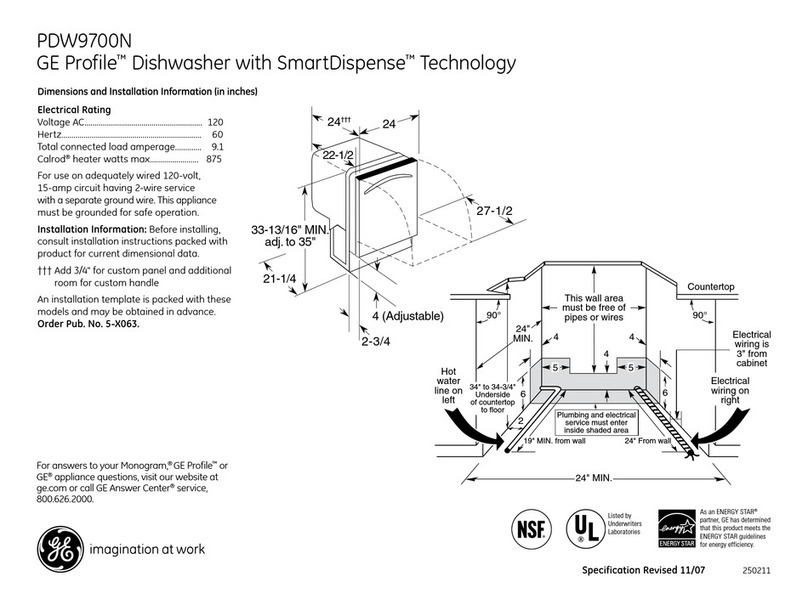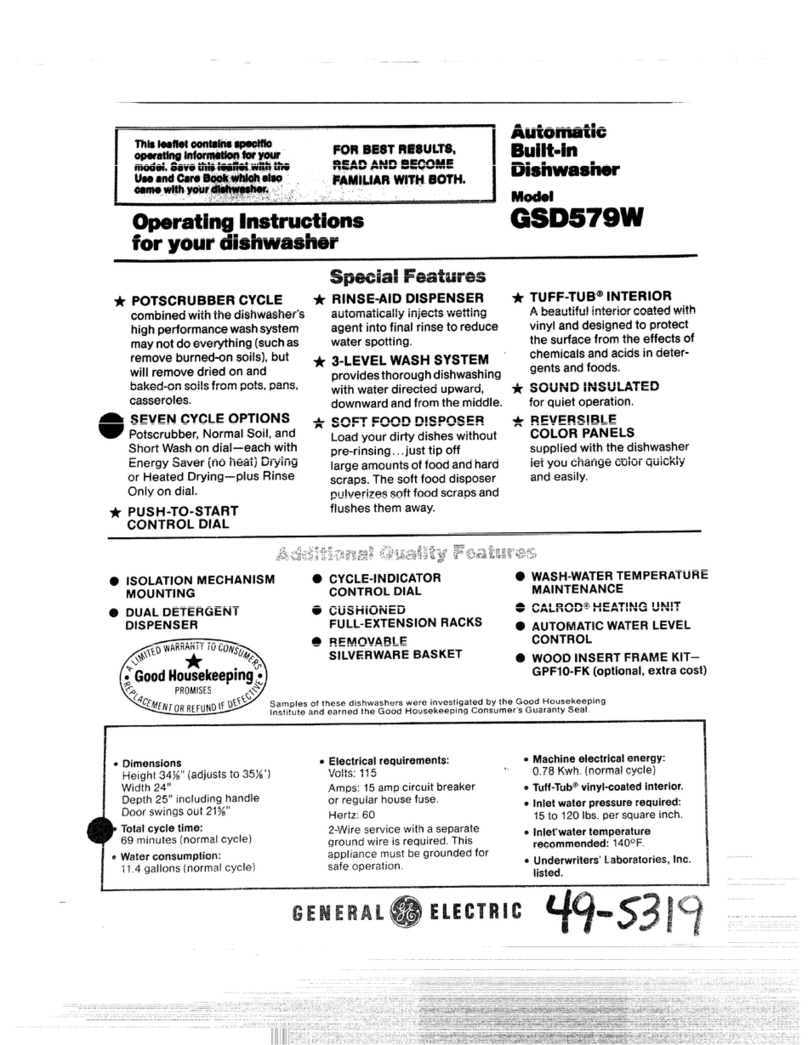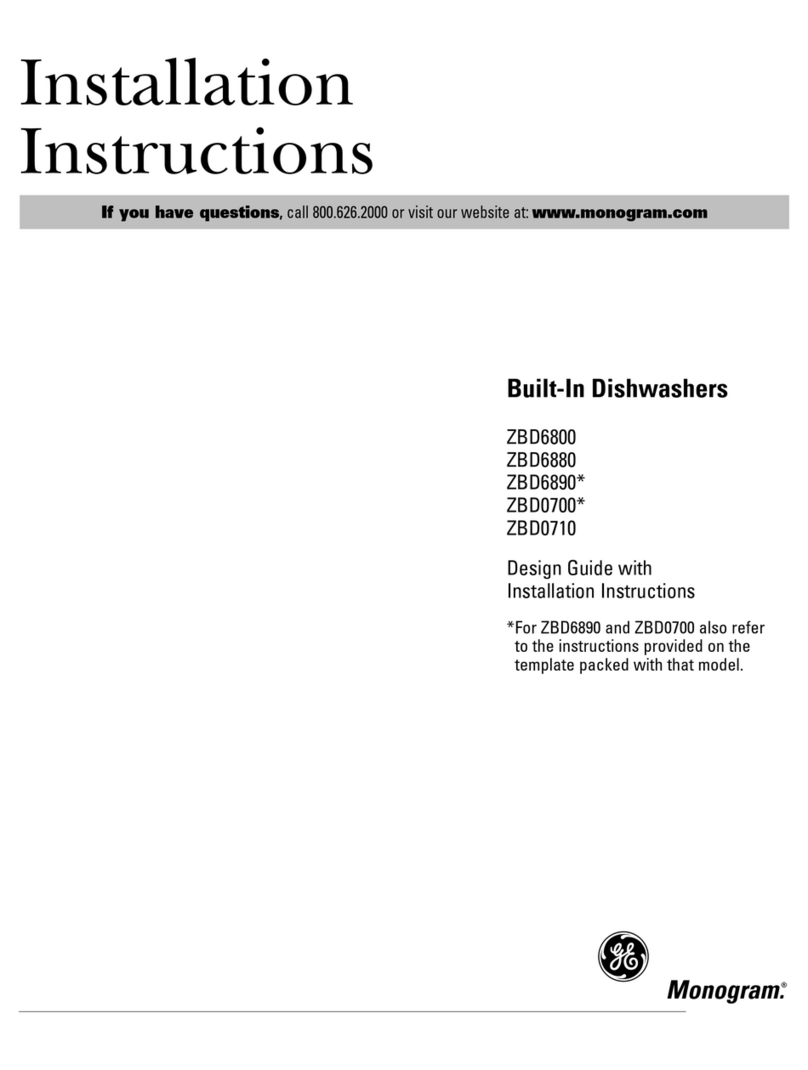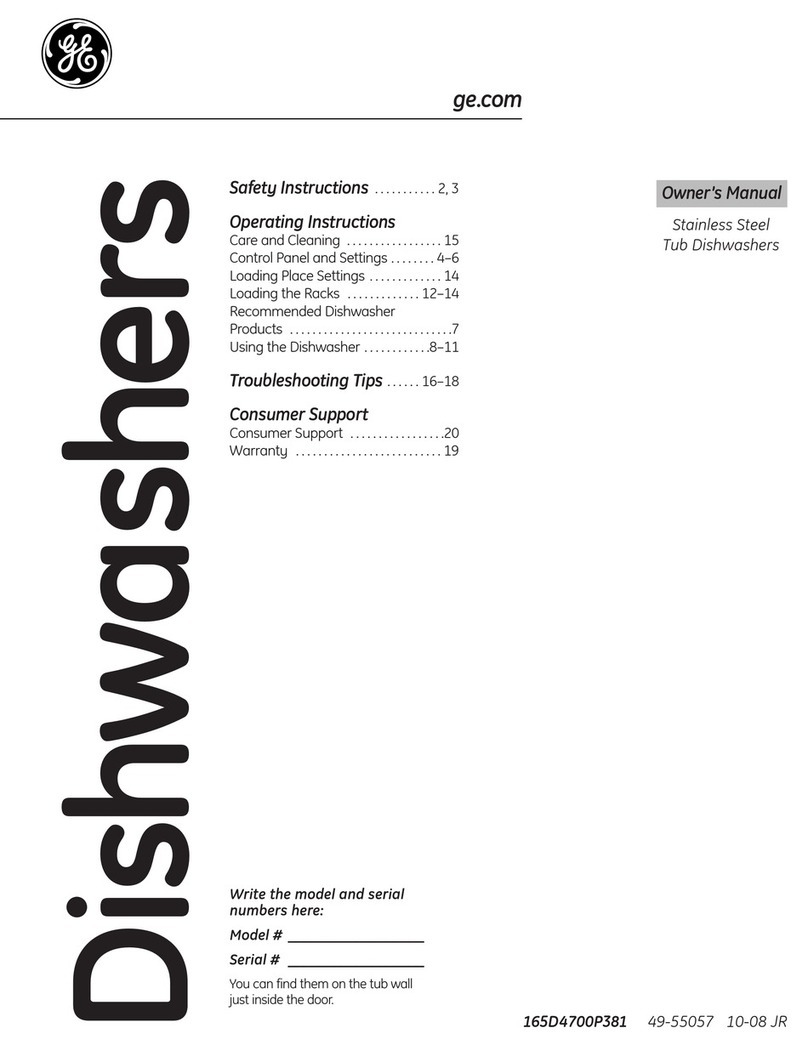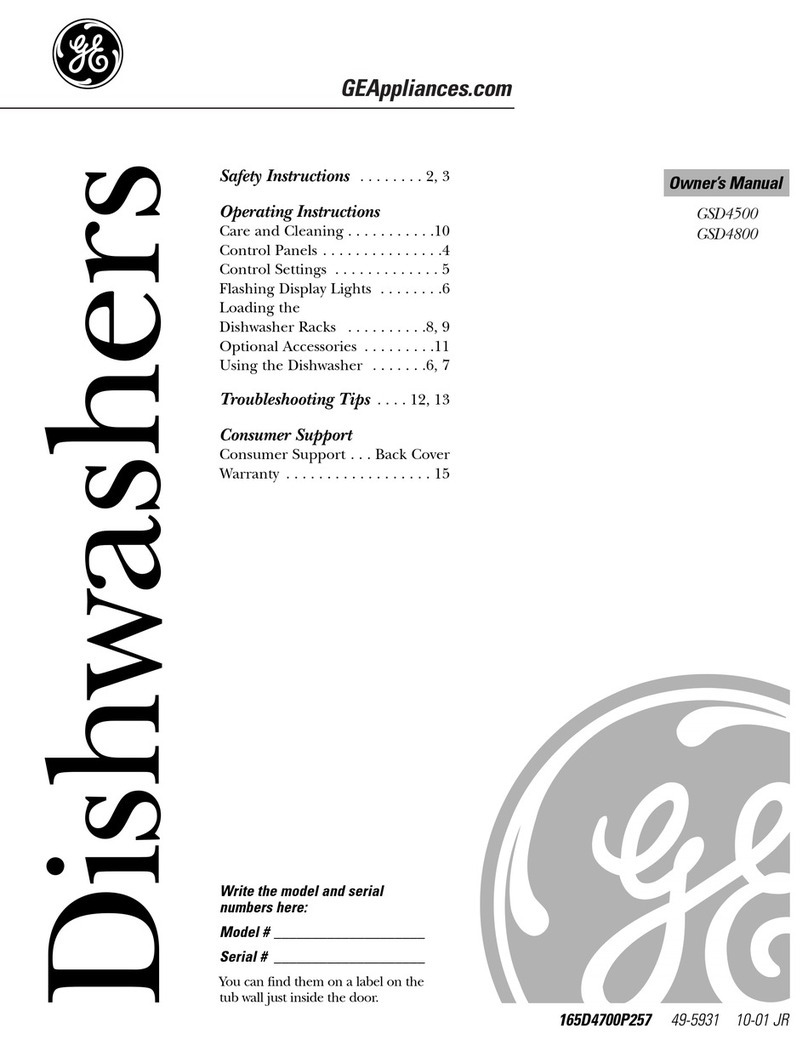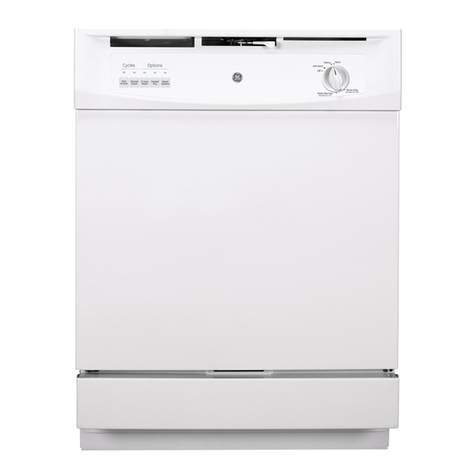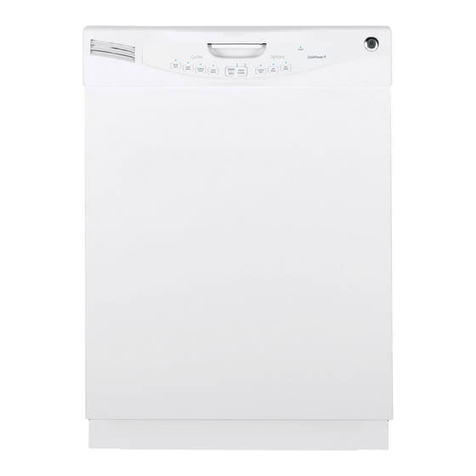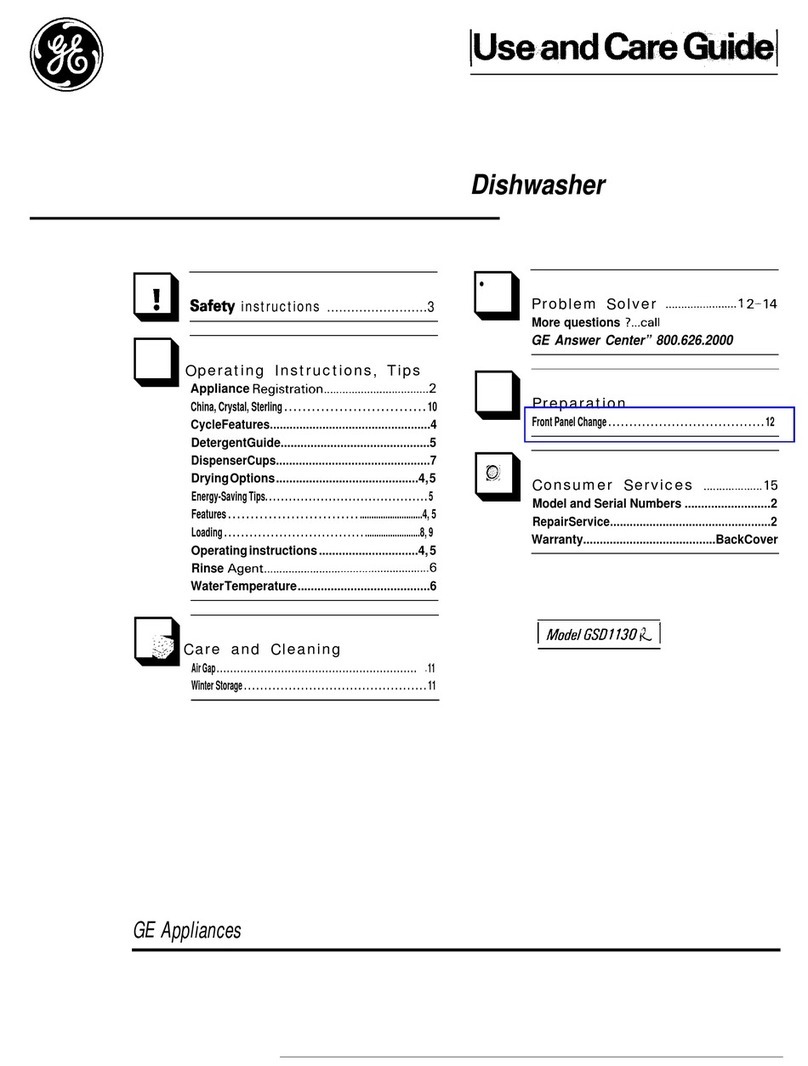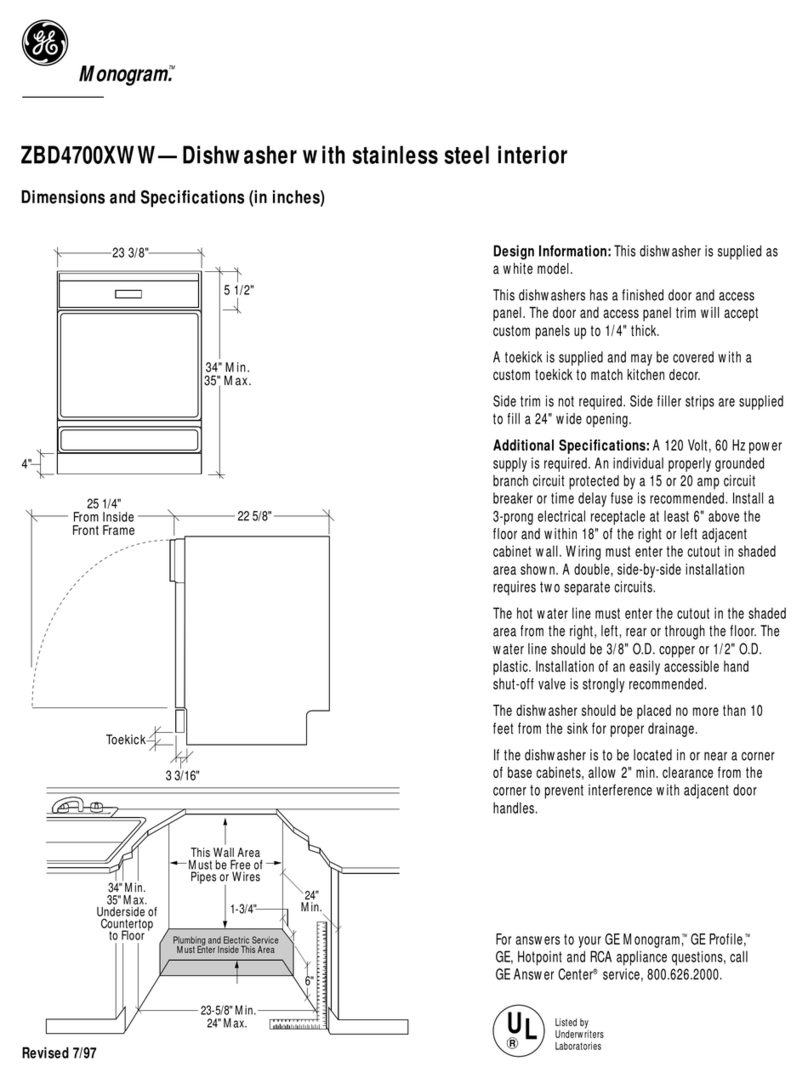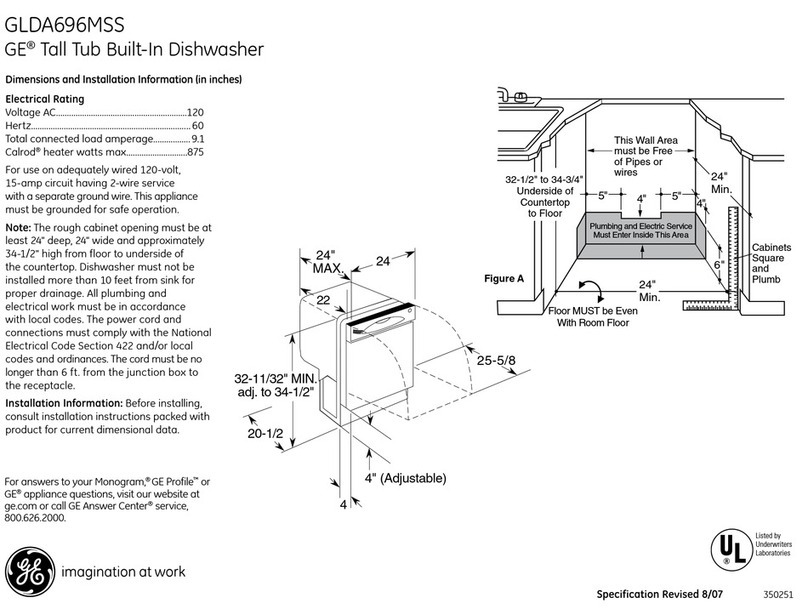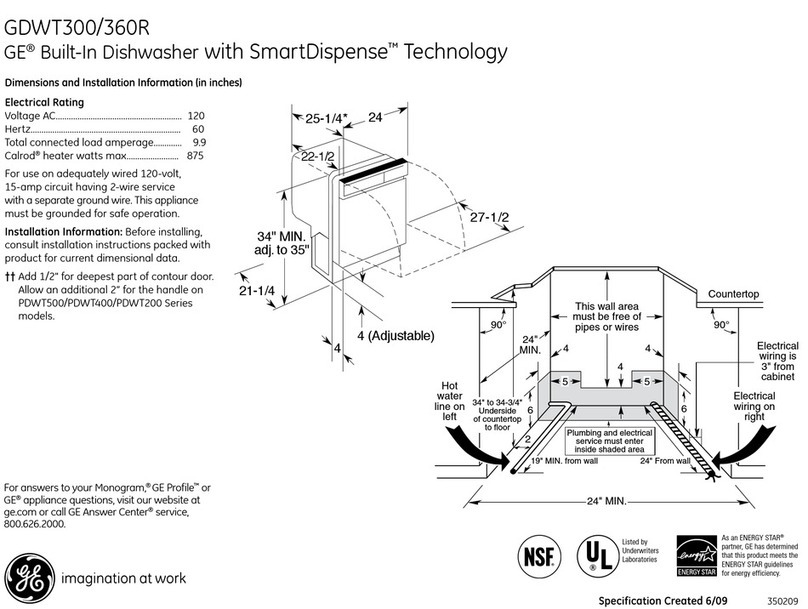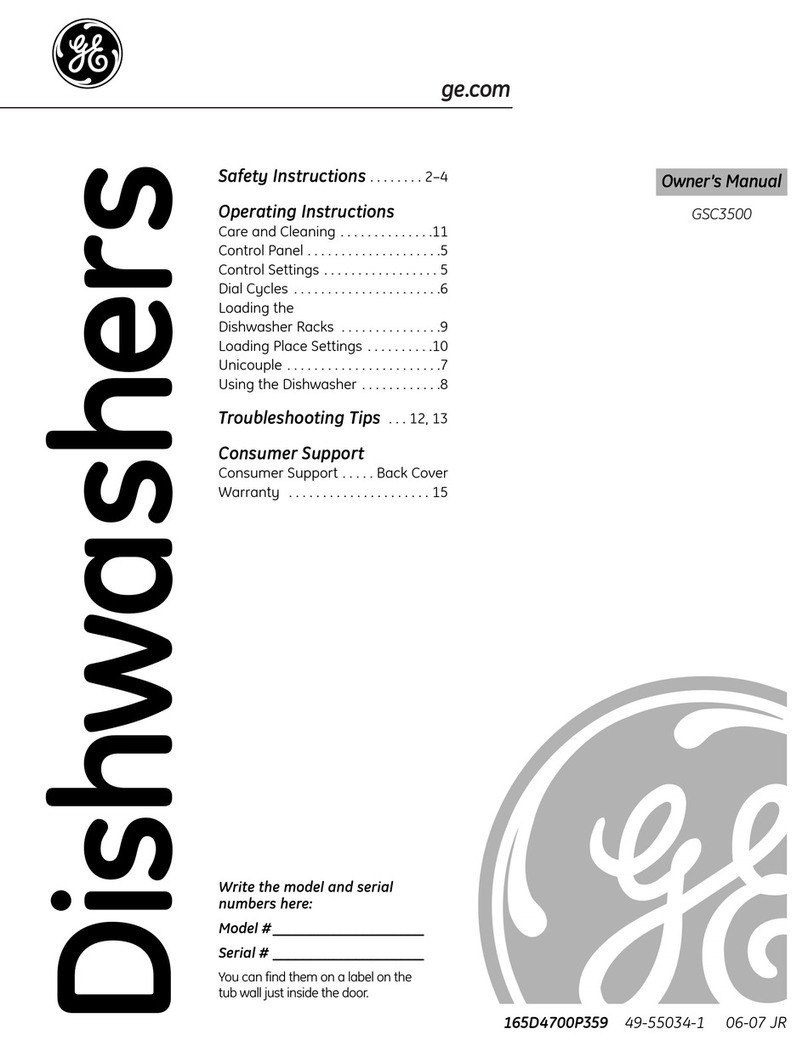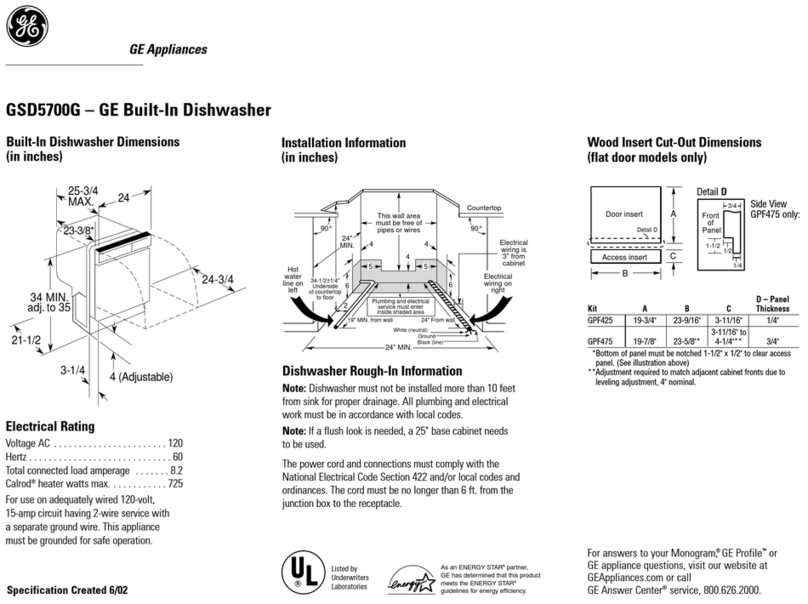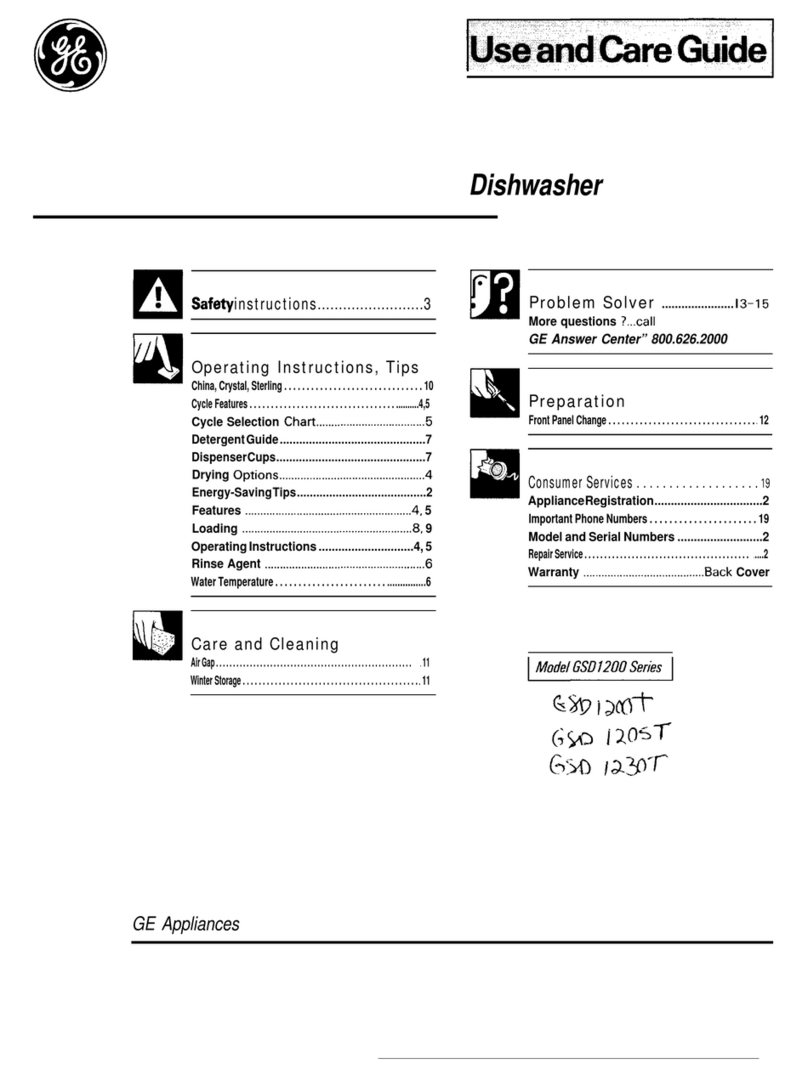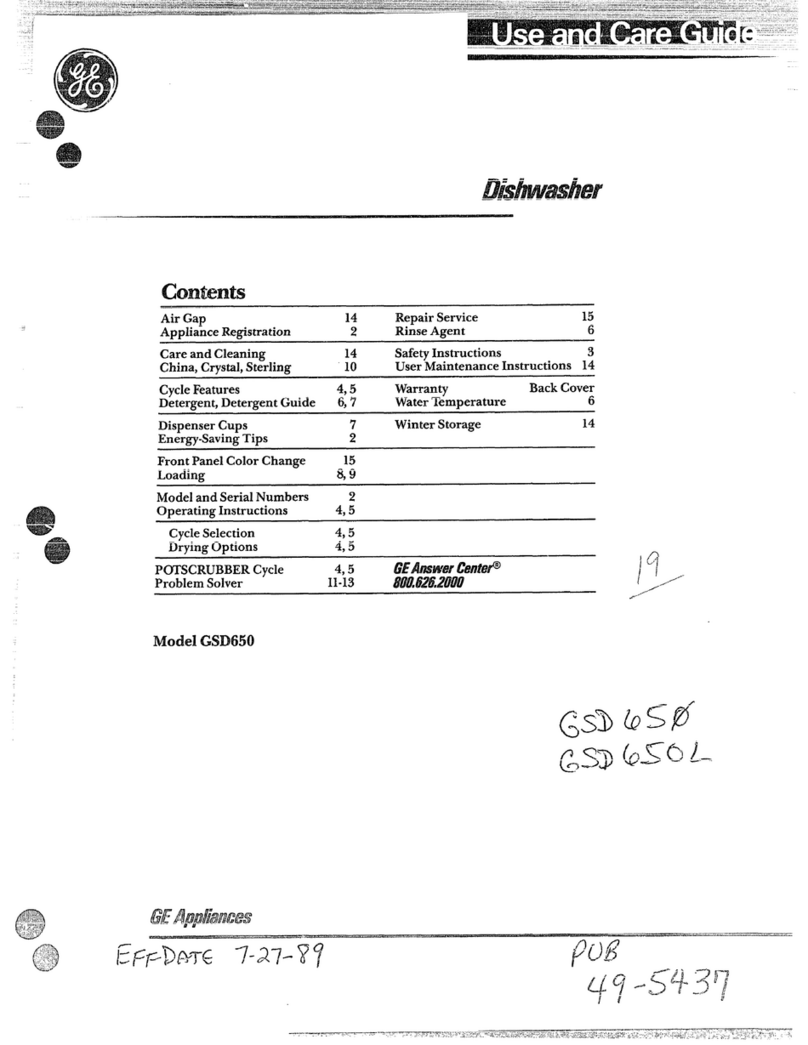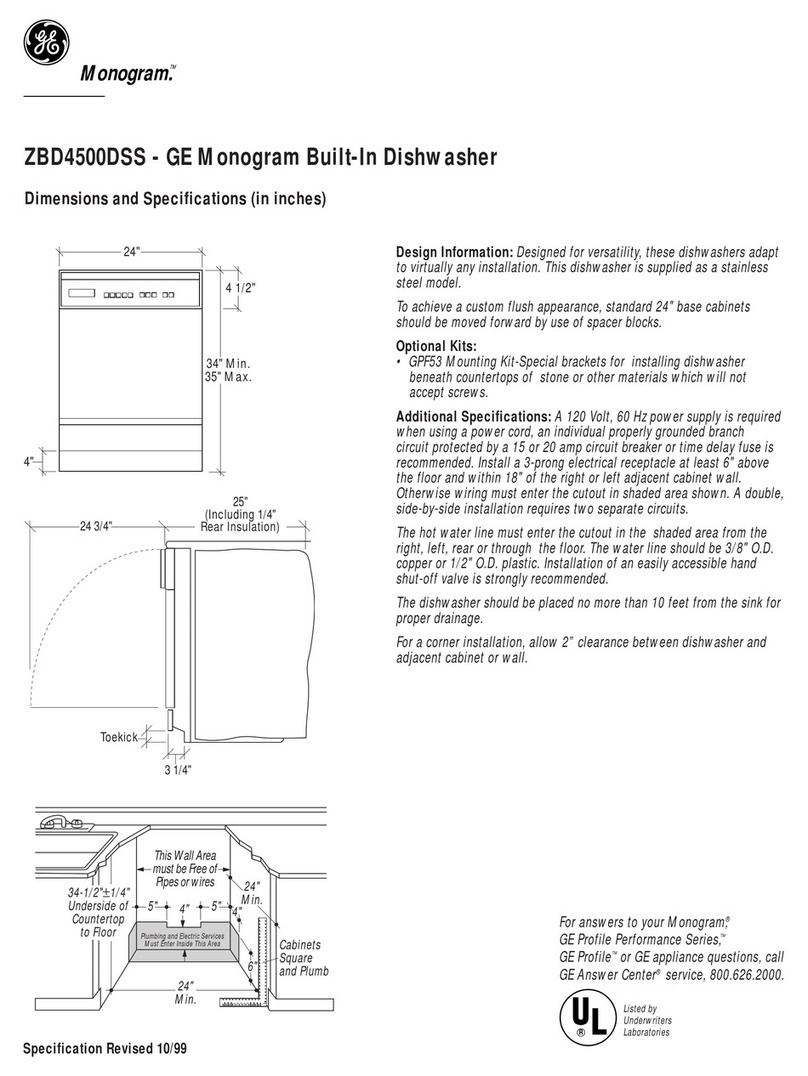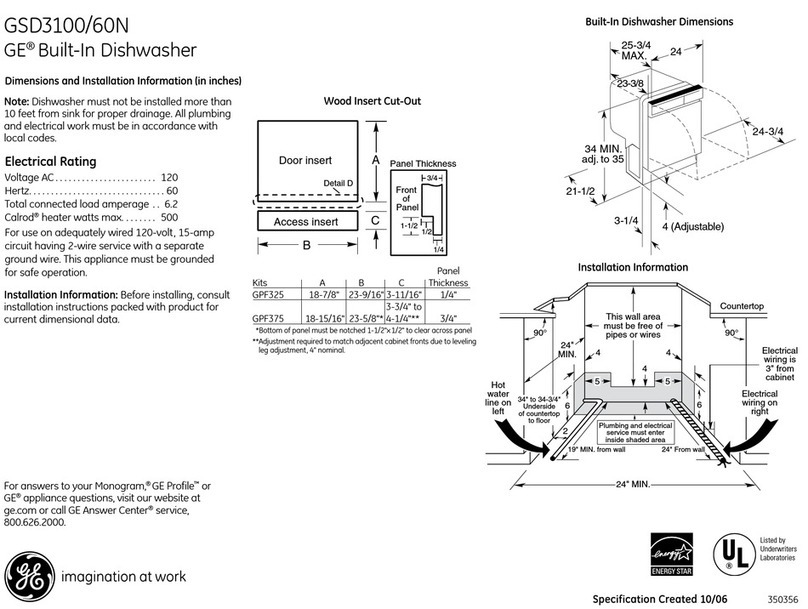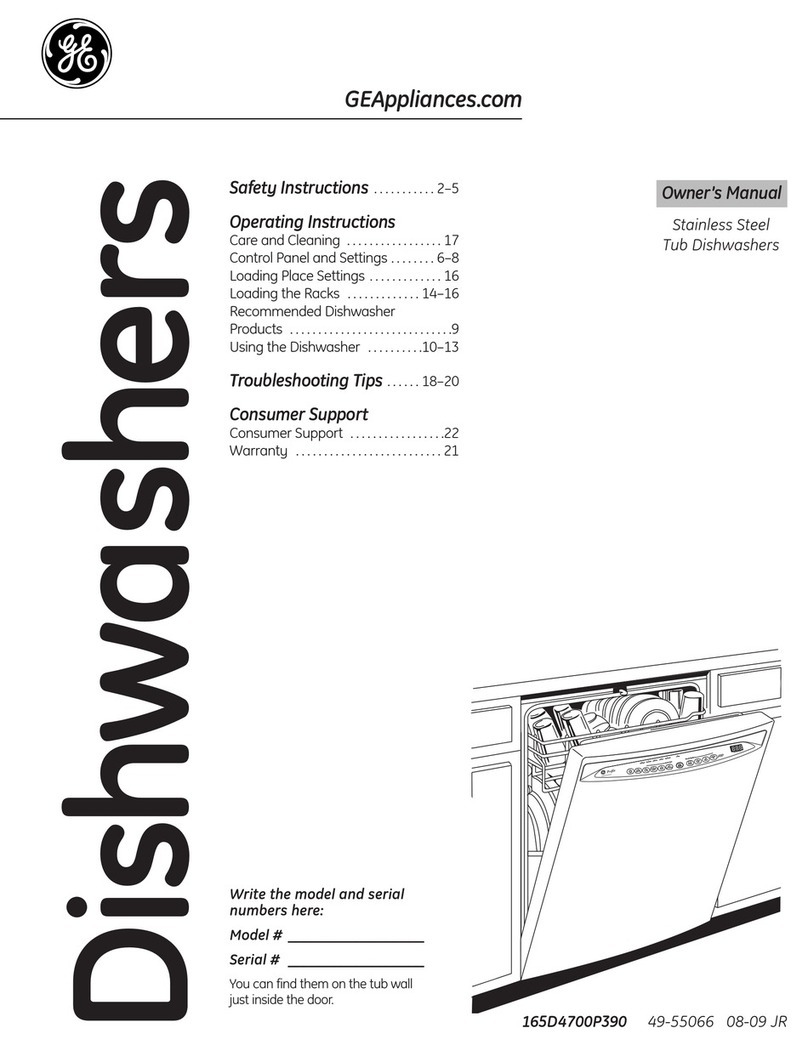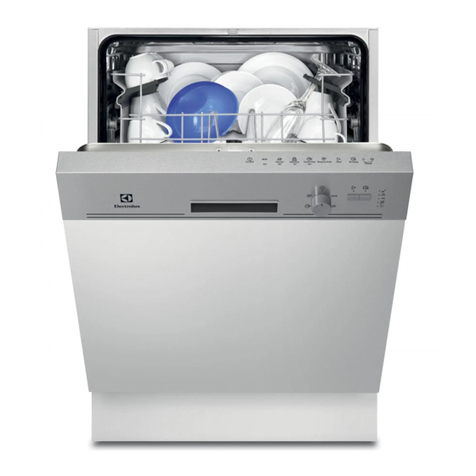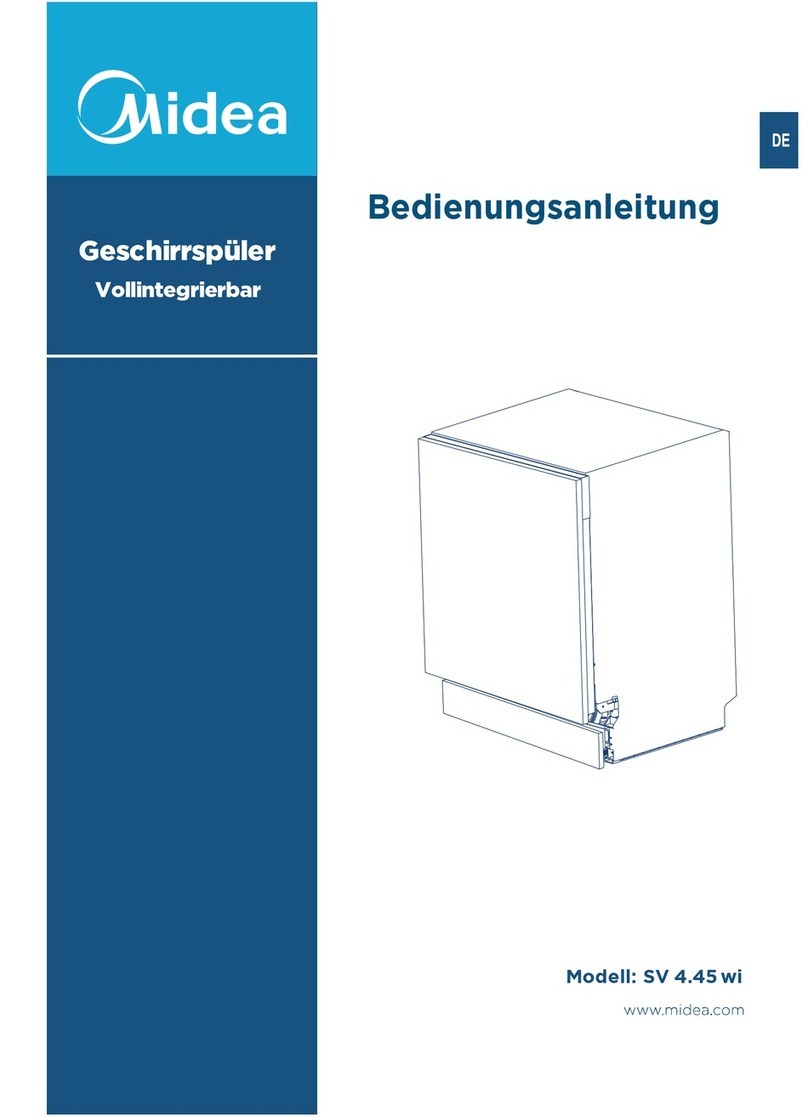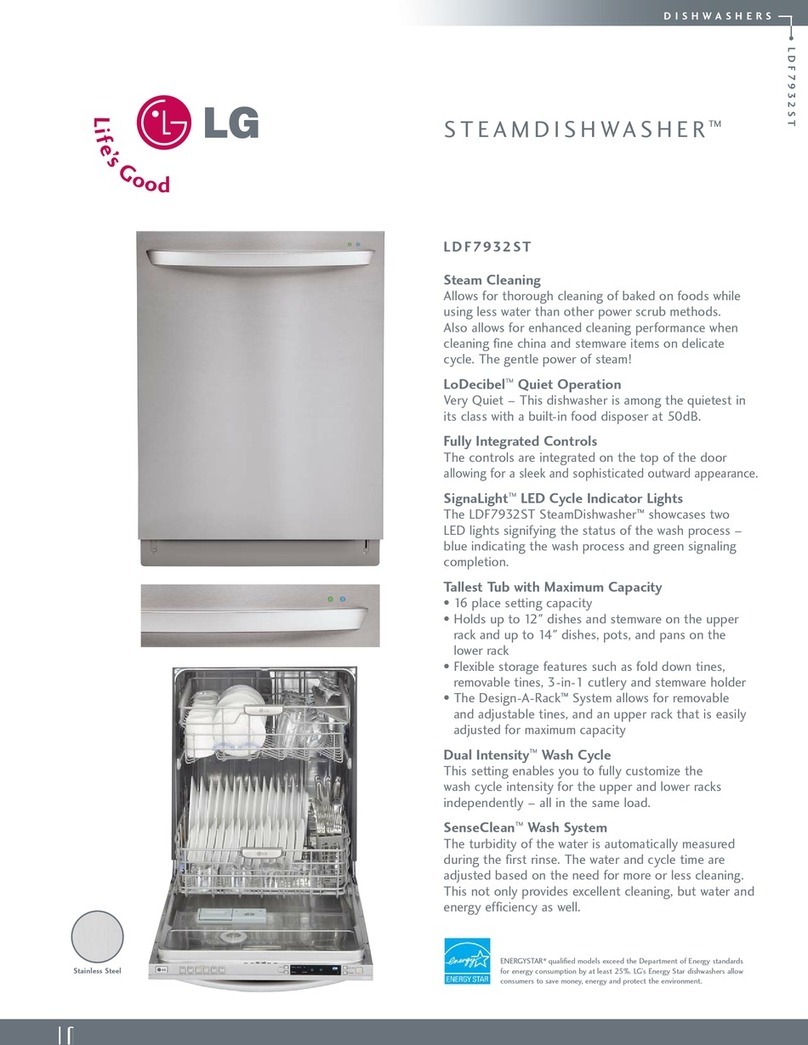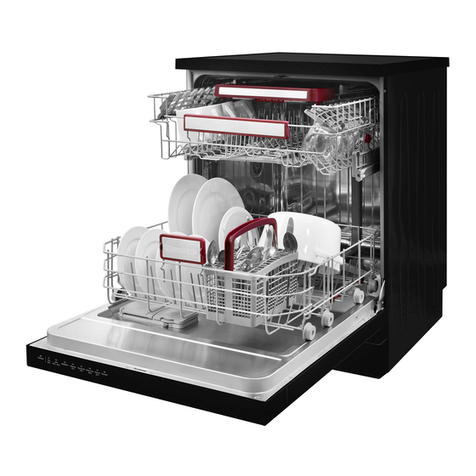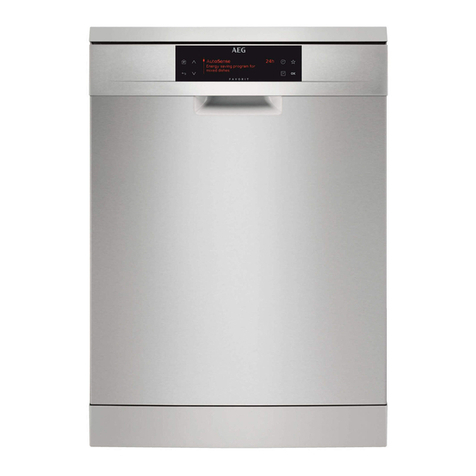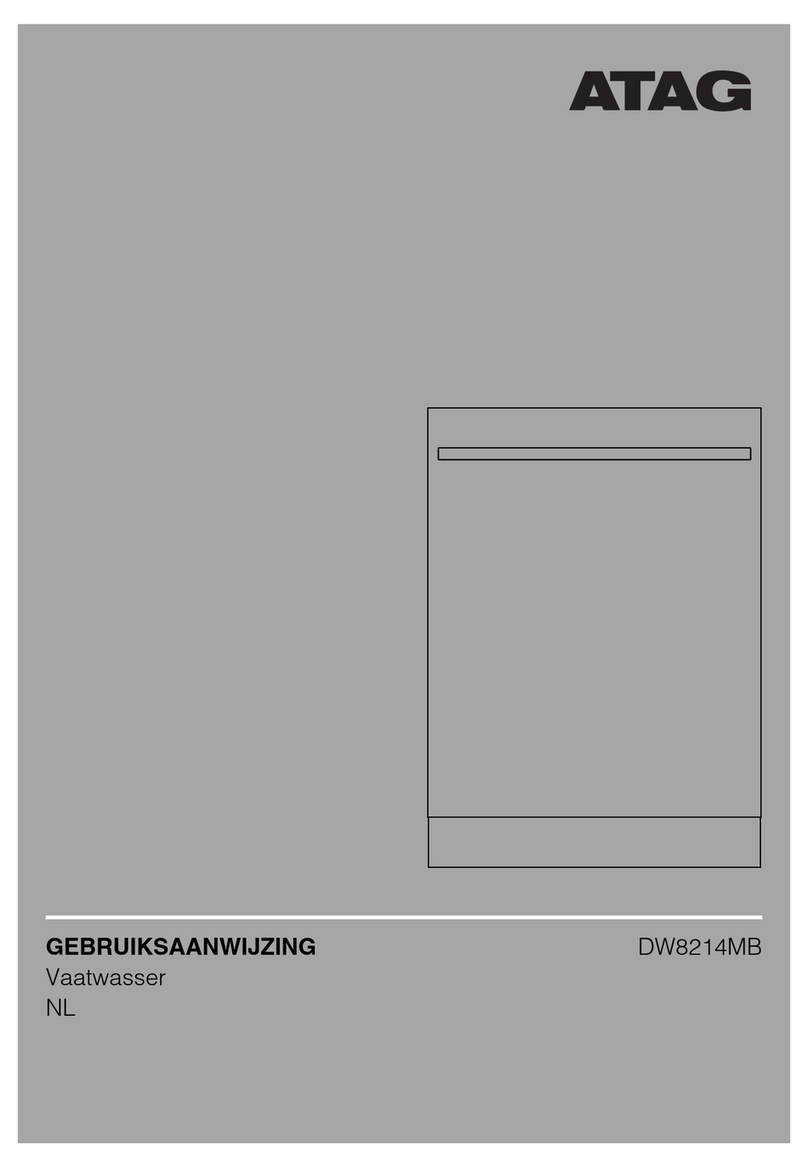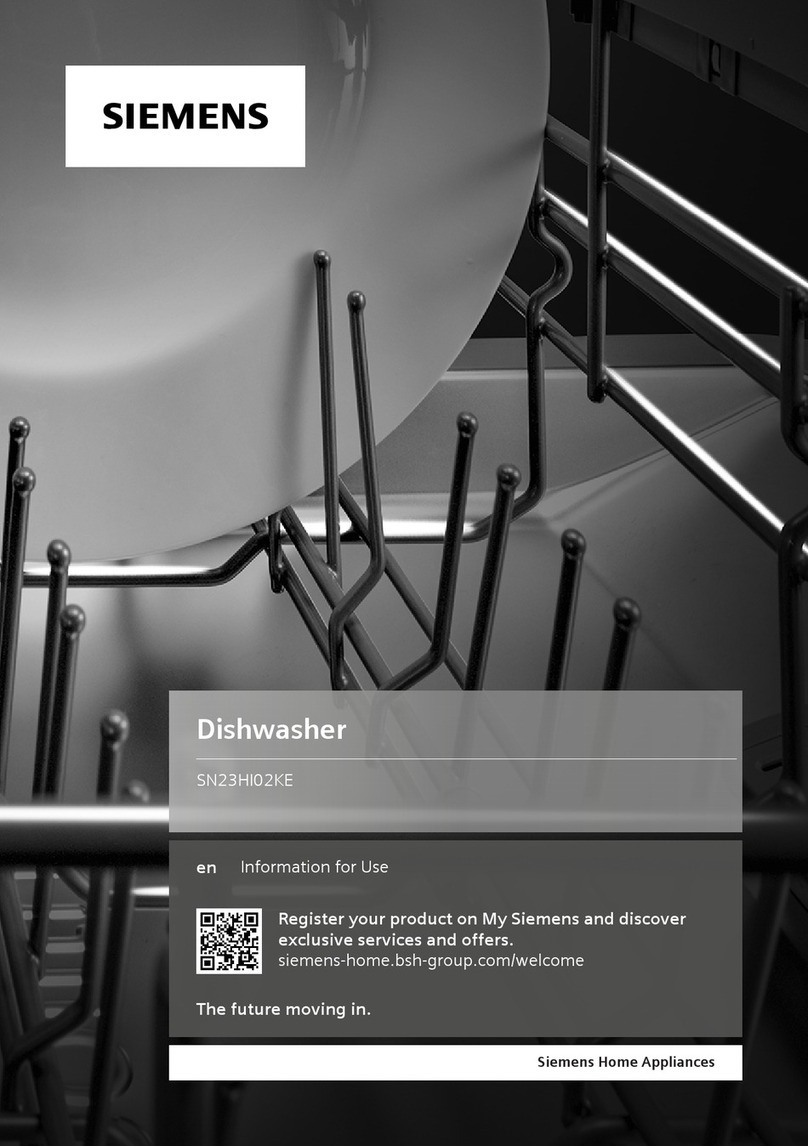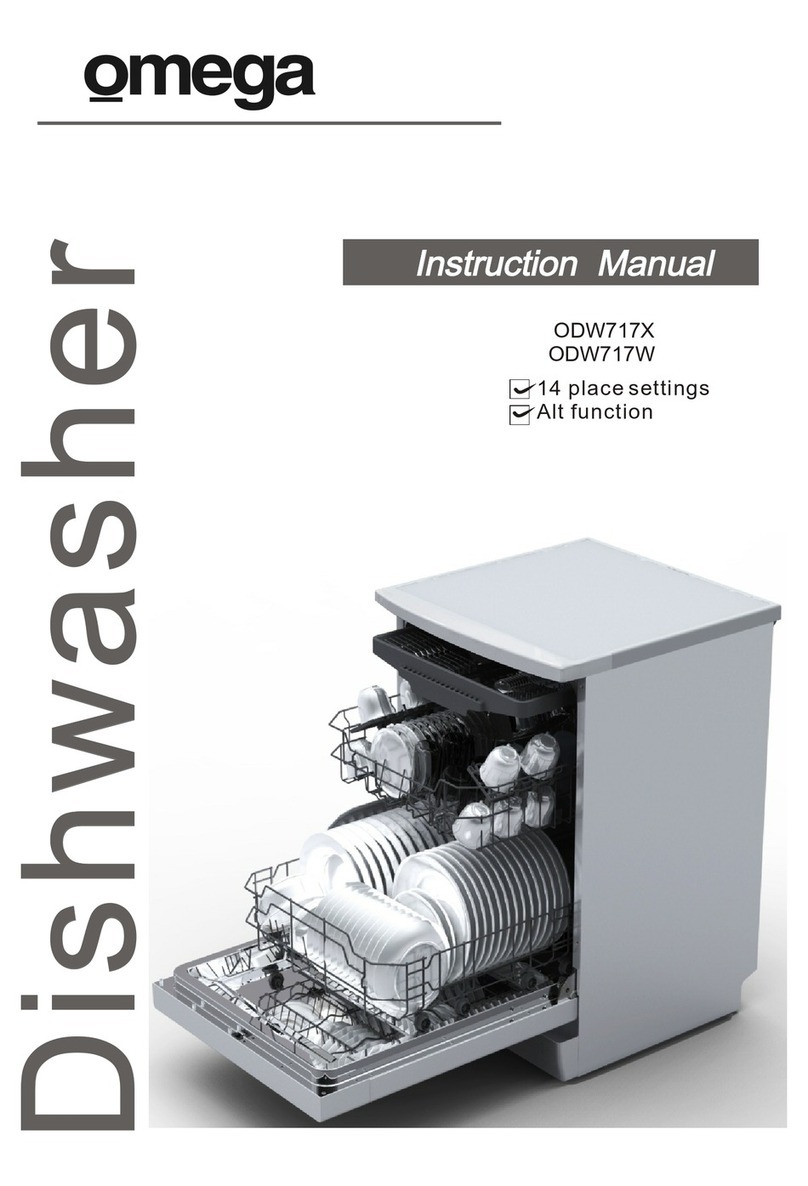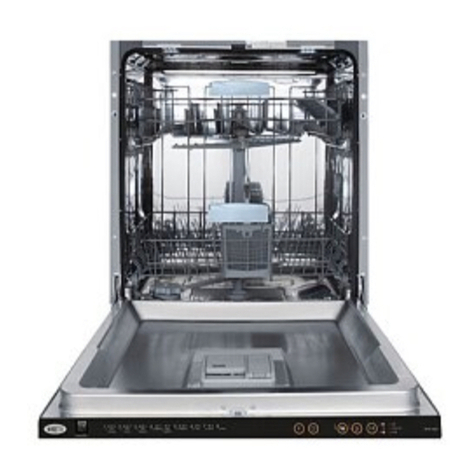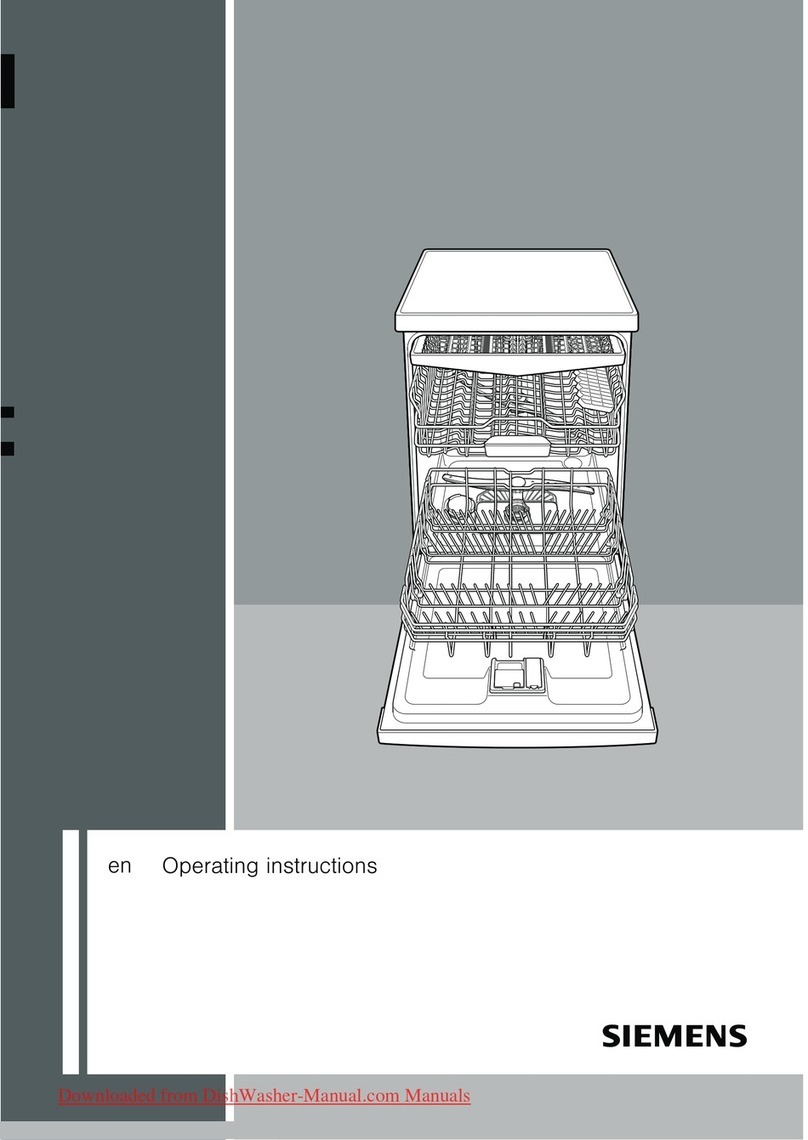Good
dishwashing
stark
with HOT water
To get dishes clean and dry you need
hot water. To help you get water of
the proper temperature, your
dishwasher has a WASH HEAT
BOOST feature. When selected (see
page 4), this water heating feature
allows you to turn down your
household water heater and save
energy if you’re willing to let the
dishwasher run a little longer while it
heats water. For good washing and
drying, the entering water must be
between
120°F
and
140°F.
To prevent
dish damage, inlet water
should
not
exceed
150°F.
How to test water temperature:
Check the water temperature inside
your dishwasher with a candy or
meat thermometer.
Let the dishwasher run through one
fill and pump out cycle, then
let
the
dishwasher fill with water the
second time, approximately 5
minutes after starting the machine.
When you hear the water stop
filling, unlatch the door and slowly
open it.
Measure the temperature of the
water in the bottom of the tub this
way:
Remove the silverware basket and
place a candy or meat thermometer
in the water towards the middle of
the tub. If the temperature is less
than
120°F,
you will not get good
washing results. Raise your water
heater temperature, wait 30 minutes
and test again. Higher water
temperature is needed to dissolve
grease and activate powder
detergents. If the water temperature
is less than
140°F,
use the WASH
HEAT BOOST Option (see page 4).
6
Helpful hints: If outside
temperatures are unusually low, or
if your water travels a long distance
from water heater to dishwasher,
you may need to
set
your water
heater’s thermostat up. If you have
not used hot water for some time,
the water in the pipes will be cold.
Turn on the hot water faucet at the
sink and allow it to run until the
water is hot. Then start the
dishwasher. If you’ve recently done
laundry or run hot water for
showers, give your water heater
time to recover before operating the
dishwasher.
How to use a Rinse Agent
A rinse agent makes water flow off
dishes quicker than usual. This
lessens water spotting and makes
drying faster, too.
For best
dishwashing
performance,
use of a rinse agent such as JET-
DRY brand is recommended.
Rinse agents come in either liquid
or solid form. Your dishwasher’s
dispenser uses the liquid form.
How to fill the rinse agent
dispenser. Unscrew the cap. Add
the liquid rinse agent until it just
reaches the bottom of the lip inside
the dispenser opening. Replace the
cap. The dispenser automatically
releases the rinse agent into the
final rinse water.
If you accidentally spill: Wipe up
the rinse agent with a damp cloth.
Don’t
leave
the spill in the
dishwasher. It can keep your
detergent from working.
If you can’t find any rinse agent,
write:
BENCKISER CONSUMER
PRODUCTS, INC.
(“JET DRY”)
411 W. Putnam Ave.
Greenwich, CT 06830
Your dishwasher’s rinse agent
container holds
4X
ounces. This
should last about 3 months. Fill as
needed. Do not overfill.
How to choose and use
detergent
First, use only powder or liquid
detergents specifically made for
use in dishwashers. Other types
will cause
oversudsing.
Second, check the phosphate
content.
Phosphate helps prevent
hard-water materials from forming
spots or film on your dishes. If your
water is hard (7 grains or more),
your detergent has to work harder.
Detergents with a higher phosphate
level
will probably work better. If
the phosphate content is
low
(8.7Y0
or less),
you’ll
have to use extra
detergent with hard water.
Your water department can tell
you how hard your water is. So
can your county extension agent
or your area’s water softener
company. Just call and ask them
how many “grains of hardness”
there are in your water.
How much detergent should you
use? That depends. Is your water
“hard” or “soft”? With hard water,
you need extra detergent to get
dishes clean. With soft water, you
need
less
detergent.
Too much detergent with soft water
not only wastes money, it can be
harmful. It can cause a permanent
cloudiness of glassware, called
“etching.” An outside layer of glass
is etched away! Of course, this takes
some time. But why take a chance
when it’s easy to find out the
hardness of your water.
Keep your detergent fresh and
dry. Under the sink isn’t a good
place to store detergent. Too much
moisture. Don’t put powder
detergent into the dispenser until
you’re ready to wash dishes, either.
(It won’t be fresh OR dry.)
If your powder detergent gets old
or lumpy, throw it away.
It won’t
wash well. Old detergent often
won’t dissolve.
If you use a liquid dishwasher
detergent, these precautions are not
necessary because
liquid
detergents
don’t “lump” as they age or come
in contact with water.
